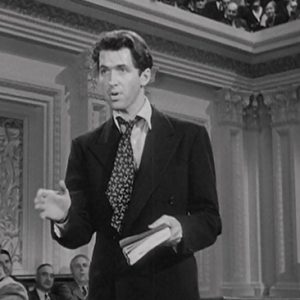For an alternative viewpoint, see “The Legislative Filibuster is Destroying Congress.”
President JoeBiden’s agenda has stalled on Capitol Hill, where Democrats have been unable to overcome Republican opposition in the Senate to pass bills like the Build Back Better Act and voting rights reform. Democrats are increasingly concerned that failure to pass more of their legislative agenda before November’s midterm elections could cost them control of Congress.
Many Democrats point to the Senate filibuster — an old bugbear in American politics — as to why they can’t deliver on their campaign promises. They claim that Republicans want to deny Democratic candidates legislative accomplishments on which to run in the coming elections.
But abolishing the filibuster will not make it easier for Democrats to pass their legislative priorities. This is because filibustering Republicans are not presently preventing Democrats from legislating. Unfortunately, calls to abolish the filibuster miss this critical fact and, by extension, overlook how Democrats can overcome Republican opposition to their legislative priorities simply by using the Senate’s existing rules.
Behind the Democratic effort to abolish the filibuster is the assumption that Senate majorities cannot pass legislation over a minority’s objections. However, the Senate’s rules do not empower a majority to end debate on a bill as long as a senator wants to speak on it. The Senate first permitted unlimited debate on legislation in 1806. That decision empowered a minority of senators to filibuster legislation supported by the majority, but only for as long as those senators were willing to stand up and talk on the Senate floor.
In 1917, the Senate adopted a rule empowering a supermajority to end a filibuster by invoking cloture. The cloture rule altered how the Senate operated over time. Instead of waiting out filibusters, as in the past, Senate majorities presently try to invoke cloture to get to a final vote on a bill. As a result, the majority gives the minority an opportunity to block a final vote that they would not otherwise have because the Senate’s cloture rule requires more votes to end debate (typically 60) than to pass legislation (typically 51).
But the filibuster has not always operated this way. In the past, the practice facilitated negotiation and compromise between senators. That is why legislation approved by the Senate often included minority-favored provisions in addition to those supported by the majority. But the prevalent view today is that partisanship and polarization prevent senators from compromising. The filibuster is a veto, according to this view, that Senate minorities can use to block legislation favored by the majority.
Yet the filibuster can only operate like a veto with the majority party’s consent. This is because the filibuster is not a veto. It instead merely grants senators the opportunity to speak on the Senate floor for as long as they are able. Using the filibuster to obstruct on a prolonged basis requires filibustering senators to expend considerable effort to succeed. And they can only succeed by persuading a majority of senators to join them in opposition to the underlying bill because a senator can’t stand up and talk forever. At some point he or she must sit down. And when that happens, the Senate votes. And the success rate of past filibusters suggests that they succeed only when mounted at the end of a legislative session.
Democrats presently use the cloture process to end debate instead of forcing senators to filibuster and then waiting them out because it is easier to control and more predictable. It also injects a degree of free-wheeling decision-making into a process that Senate Majority Leader Chuck Schumer (D-N.Y.), would rather control. Finally, forcing unsuccessful cloture votes gives Democrats the ability to blame Republicans for not delivering on their campaign promises during election season.
Democrats do not have to use cloture to overcome Republican opposition. They can instead force Republicans to stand up and talk while using the Senate’s existing rules to make filibustering as painful as possible for them. Senate history suggests that if Democrats want to end a filibuster, requiring Republicans who do not want to vote to hold the floor and speak is just as effective in overcoming their opposition as invoking cloture. And it doesn’t require 60 votes to work.
The filibuster is not the problem. Democrats are. And if they want to pass Biden’s agenda, they should use the Senate’s rules instead of blowing them up to abolish the practice.

